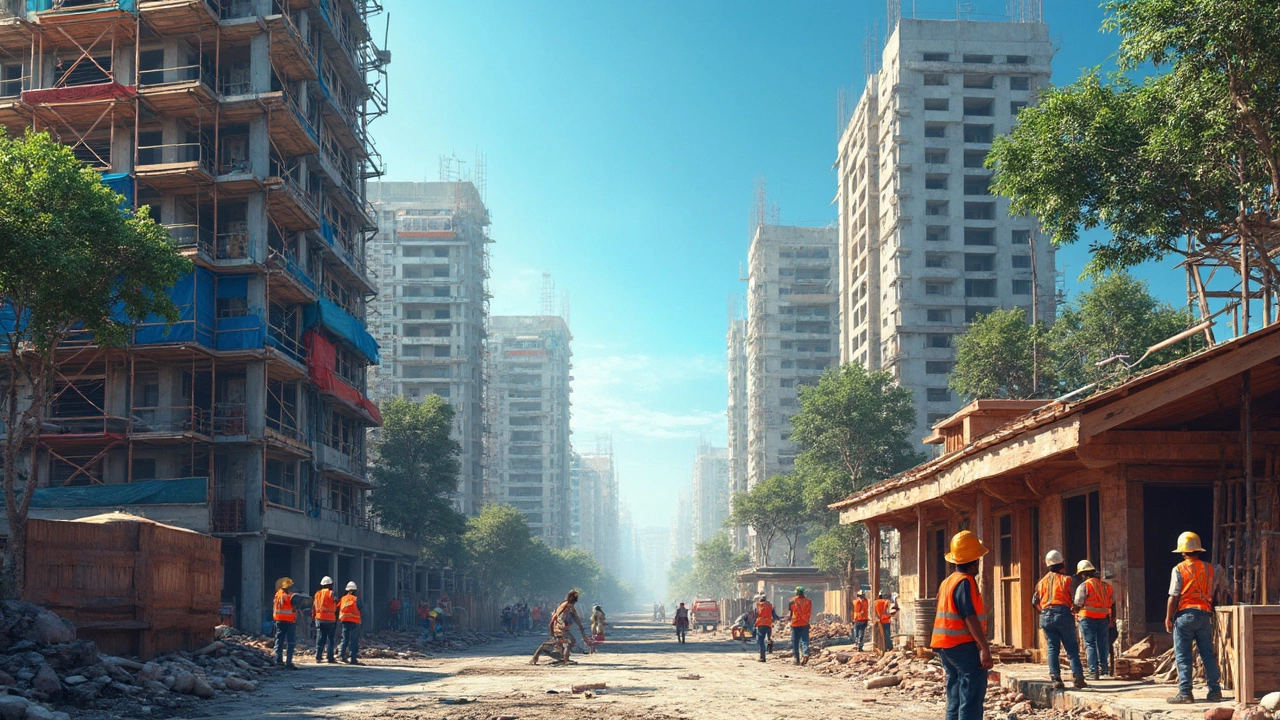Wood in Construction: Types, Uses, and What You Need to Know
When you think of building a house, wood, a natural, versatile material used for framing, flooring, and finishes in homes and light commercial buildings. Also known as timber, it’s one of the oldest and still one of the most common building materials in the world. It’s not just about logs and planks anymore. Today’s wood includes engineered products like cross-laminated timber (CLT), laminated veneer lumber (LVL), and I-joists—materials designed to be stronger, straighter, and more predictable than old-school sawn lumber. These aren’t gimmicks; they’re changing how buildings are made, especially in places like the UK and Massachusetts where code changes and sustainability goals are pushing builders to rethink everything.
Not all wood is the same, and choosing the wrong type can lead to problems. timber framing, a traditional method using large, heavy timbers joined with mortise and tenon, often seen in historic homes and high-end custom builds is still around, but most new homes use light-frame construction with 2x4s and 2x6s. Then there’s engineered wood, manufactured products made from wood fibers, strands, or veneers bonded with adhesives to improve strength and reduce waste. These are the backbone of modern roofs, floors, and walls. They’re used because they’re cheaper, more consistent, and often perform better than solid wood. But they also come with trade-offs—moisture sensitivity, glue concerns, and fire ratings that vary by product.
Why does this matter? Because wood isn’t just a structural material—it’s tied to cost, speed, and environmental impact. A 2000 sq ft house in Massachusetts or a 3,000 sq ft home in California might use more engineered wood than solid timber, simply because it’s faster to install and easier to source. Builders who skip proper drying or ignore moisture barriers end up with mold issues, which we’ve seen in new builds across the U.S. and U.K. And while wood is renewable, not all sourcing is ethical. That’s why certifications like FSC (Forest Stewardship Council) are becoming a must-have, not a marketing buzzword.
You’ll find wood in almost every post here—from foundation repairs where rot sets in, to kitchen installations where cabinetry makes or breaks the look, to loft conversions where structural wood beams dictate what’s possible. Whether you’re a homeowner wondering if you can paint over new wood drywall, a contractor comparing material costs, or just someone trying to understand why your new house smells like sawdust, the answers are in the details. What you’ll find below aren’t just articles—they’re real-world guides on how wood behaves, how to work with it, and how to avoid the mistakes that cost people time, money, and peace of mind.
Construction Materials: The Big Three You Can't Ignore
Curious about what really holds up our buildings? This article breaks down the three main construction materials—concrete, steel, and wood—explaining why they matter and where you see them every day. You'll get practical tips on picking the right material for your project and learn some surprising facts that could save you time and money. Perfect read if you're stepping into construction or just want to know what that house down the street is made of. The info here is clear, straight-up, and super handy for anyone interested in how stuff gets built.
Learn more...